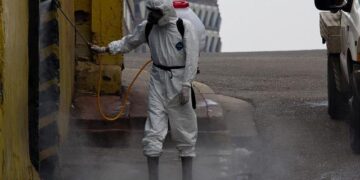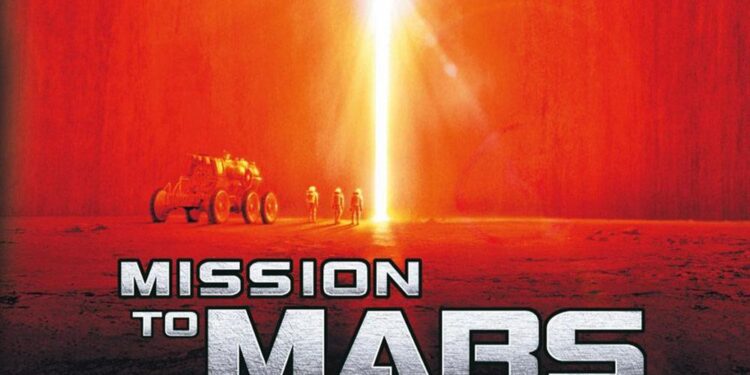The Financial Times has published a revealing transcript titled “Mission to Mars – Bad Science Fiction,” delving into the pitfalls and scientific inaccuracies that often plague portrayals of Mars exploration in popular media. This in-depth discussion sheds light on how sensationalized narratives can distort public understanding of space missions, emphasizing the need for more accurate and responsible storytelling as humanity inches closer to interplanetary travel.
Mission to Mars Exposes Flaws in Popular Science Fiction Narratives
Recent scripted portrayals of the Mars mission, while captivating, have largely overlooked critical scientific and logistical complexities, revealing a pattern of oversimplification common in the genre. Popular narratives tend to dramatize survival struggles and interpersonal conflicts at the expense of accuracy, often ignoring crucial factors such as the planet’s harsh radiation environment, communication delays, and the intricacies of life-support systems. These omissions not only mislead the audience but also underestimate the true challenges faced by real-life astronauts and space agencies.
Key scientific realities often neglected include:
- Exposure to cosmic radiation and its long-term health effects
- Extremely limited rescue or resupply options from Earth
- Psychological impacts of isolation amplified by communication delays
- Technical complexities of sustainable habitat construction
| Aspect | Typical Sci-Fi Depiction | Actual Challenge |
|---|---|---|
| Radiation | Minimal or no impact highlighted | High risk, requiring thick shielding and careful planning |
| Communication | Instantaneous conversations | Delays of up to 22 minutes each way |
| Rescue | Rapid evacuation possible | Evacuation not currently feasible |
Examining the Financial and Scientific Realities Behind Interplanetary Travel
The prospect of interplanetary travel, particularly a manned mission to Mars, is often hyped with visions of scientific triumph and boundless exploration. However, the financial realities present a stark contrast to such optimism. Current budget estimates for a single Mars mission exceed $100 billion, encompassing spacecraft development, launch infrastructure, life support systems, and long-term sustainability measures. These colossal figures place the venture squarely in the realm of government agencies or mega-corporations with deep pockets, rendering the dream unattainable for private enterprises or international coalitions with limited resources.
- Estimated Mission Cost: $100+ billion
- Timeframe: 7+ years for development and transit
- Key Expense Drivers: Propulsion technologies, habitat modules, radiation shielding
Scientifically, the challenges compound beyond budgetary limits. Radiation exposure in deep space remains a critical health hazard that current technology cannot adequately mitigate. Zero-gravity environments lead to muscle atrophy and bone density loss, threatening astronaut wellbeing during the extended duration of Mars expeditions. Additionally, closed-loop life support systems, vital for sustaining human crews, are still in developmental stages and have not been tested extensively in deep space conditions. Without breakthroughs in these areas, the feasibility of long-term interplanetary travel remains speculative at best.
| Scientific Challenge | Current Status | Projected Solution Timeline |
|---|---|---|
| Radiation Shielding | Experimental | 10-15 years |
| Life Support Systems | Prototype Phase | 7-10 years |
| Muscle and Bone Preservation | Partial Solutions (Exercise Regimens) | 5-7 years |
Recommendations for Grounding Future Mars Missions in Rigorous Research and Policy
As Mars missions transition from concept to reality, it is imperative that they are grounded in comprehensive scientific validation and robust policy frameworks. Investment in interdisciplinary research must become a cornerstone, integrating planetary science, human physiology, and environmental engineering to address the unique challenges of Mars exploration. Equally crucial is the establishment of transparent, evidence-based guidelines that safeguard both astronaut welfare and planetary protection, ensuring that exploration efforts do not inadvertently cause irreversible ecological disruptions.
Policymakers and stakeholders should prioritize:
- Data-driven decision-making backed by rigorous peer-reviewed studies.
- International collaboration for shared technological and scientific advances.
- Adaptive regulatory frameworks that evolve with emerging findings and mission outcomes.
- Public accountability through transparent reporting and community engagement.
| Research Area | Policy Priority | Impact |
|---|---|---|
| Astrobiology | Planetary protection protocols | Prevent contamination |
| Human Health | Medical standards for prolonged exposure | Ensure astronaut safety |
| Environmental Engineering | Sustainable habitat design | Balance resources with longevity |
| Policy and Governance | International treaties and regulations | Coordinate missions globally |
In Conclusion
In sum, the Financial Times’ critique of “Mission to Mars” underscores the enduring tension between cinematic ambition and scientific accuracy. While the film aims to capture the imagination of space enthusiasts and general audiences alike, its liberties with science highlight the challenges filmmakers face in balancing storytelling with factual integrity. As interest in Mars exploration continues to grow in the real world, such analyses serve as a reminder of the importance of grounding fiction in credible science, ensuring that entertainment inspires without misleading.





























